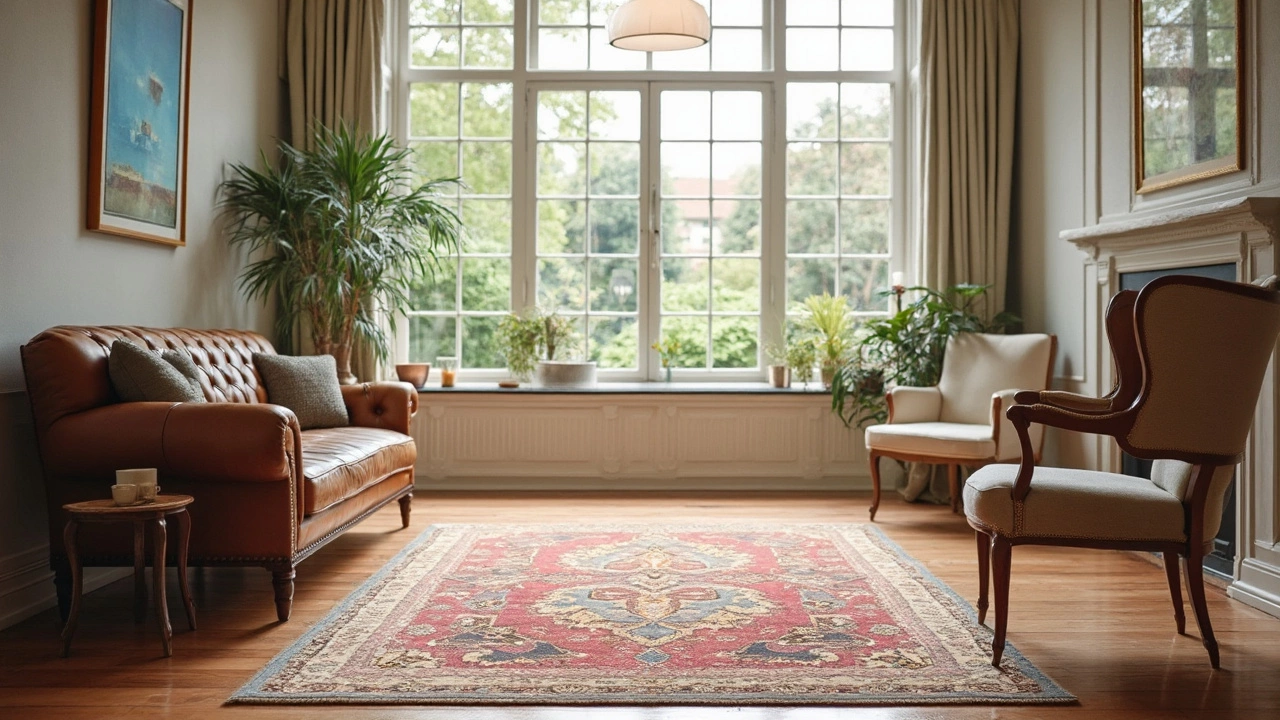Furniture on New Rug: How to Pick the Right Rug for Your Furniture
When you bring a new rug home, the first question is where to put the furniture. The answer isn’t just about looks – the right rug size makes a room feel balanced, protects your floor, and keeps chairs and sofas from slipping. In this guide we’ll walk through the basics so you can lay the rug down with confidence, not guesswork.
Figure Out the Right Size
Start by measuring the area where you want the rug. A common rule of thumb is to leave at least 18‑24 inches of bare floor around the edges of the rug. For a sofa, the front legs should sit on the rug while the back legs stay off – that creates a grounded look without choking the space. If you have a coffee table, aim for a rug that extends 12‑18 inches beyond it on all sides. When you draw these lines on paper or use masking tape on the floor, you’ll instantly see whether a 5‑ft, 8‑ft, or larger rug fits best.
Pick the Right Shape and Style
Rectangular rugs work well in most living rooms because they follow the natural lines of sofas and walls. If your room is square or you have a round coffee table, a round rug can soften the angles and add visual interest. Look at the overall vibe you want – a low‑pile, neutral rug hides stains and works for high‑traffic zones, while a plush, patterned rug adds coziness to a formal setting. Keep the color palette simple: if your furniture is bold, choose a muted rug; if the furniture is neutral, a rug with a pop of color can become the focal point.
Don’t forget texture. A flat‑weave rug feels light under feet and is easy to move, but a thicker, woven rug offers more cushioning for chairs and kids crawling around. Think about how you’ll use the space – a dining area benefits from a smooth surface that slides plates easily, while a lounge area enjoys a softer feel under your feet.
Placement Tips for Everyday Use
After you’ve decided on size and shape, lay the rug down and step back. Check that the furniture lines up evenly; an off‑center rug can make a room feel lopsided. If you notice gaps, consider adding a smaller accent rug or a rug pad to fill the space and prevent slipping. For open‑plan homes, use a single large rug to tie together the kitchen, dining, and living zones – just make sure the rug’s edges don’t cut across the flow of traffic.
Protect high‑traffic areas with a rug pad. Pads keep the rug from sliding, reduce wear, and add an extra layer of cushioning. They’re especially useful on hardwood or tile floors where a slip could be dangerous. Choose a pad that’s ¼‑inch thick for most rugs; thicker pads work with shaggy rugs that need a bit of support.
Maintenance Made Easy
Keep your rug looking fresh by vacuuming it weekly and spot‑cleaning spills right away. For natural fiber rugs, a gentle shake‑out outdoors once a month helps remove dust. If your rug gets heavily soiled, a professional clean once a year can extend its life. Remember that the rug also protects your furniture legs from scratches, so a well‑maintained rug benefits both your floor and your pieces.
Choosing the right rug for your furniture isn’t a mystery – it’s about measuring, matching style, and planning placement. Follow these steps, and you’ll end up with a room that feels balanced, looks good, and stays functional for years to come.
Discover if you should put furniture on a new rug right away, tips to prevent dents, how to protect your new rug, and avoid common rug placement mistakes.
Jul, 1 2025
